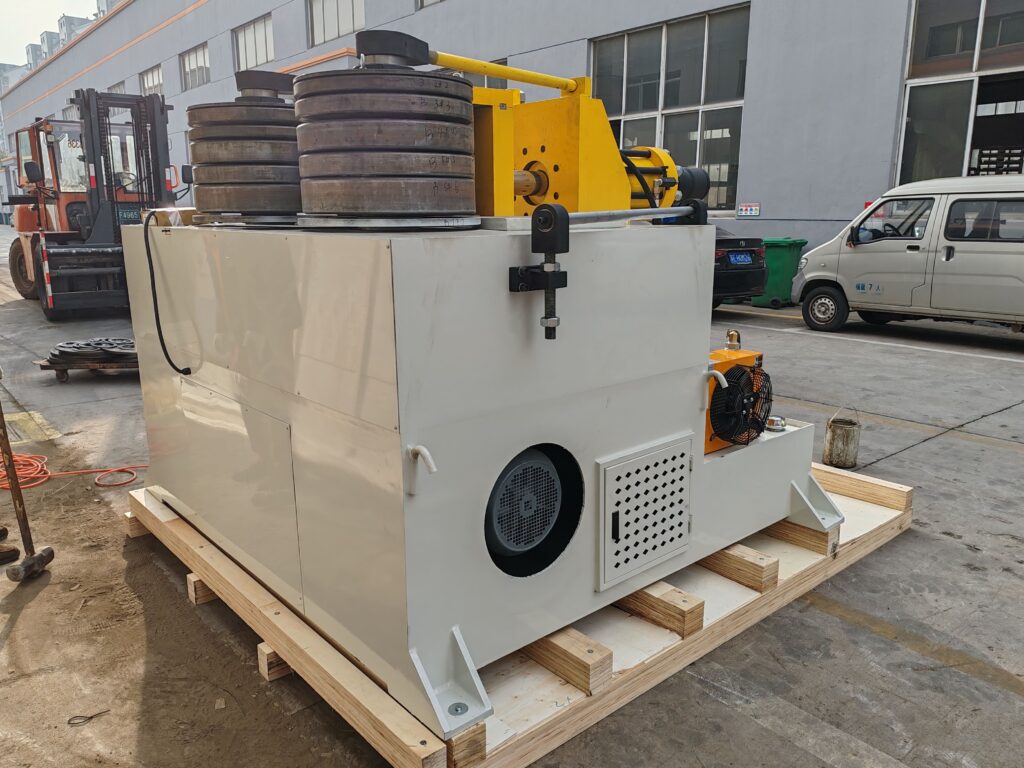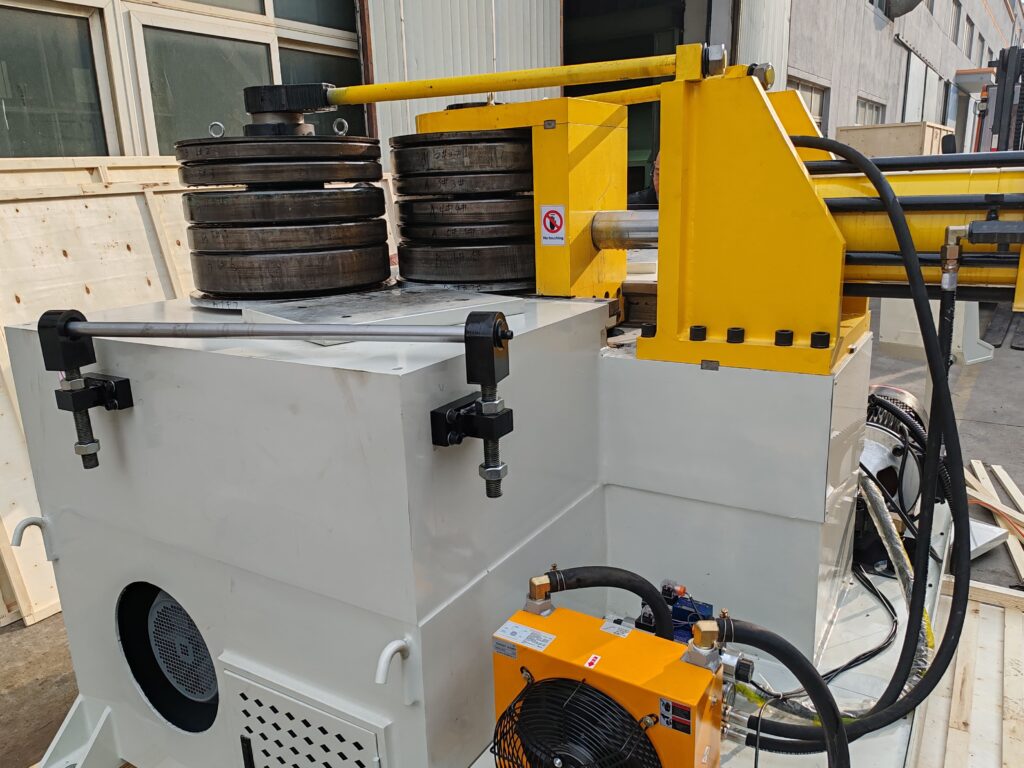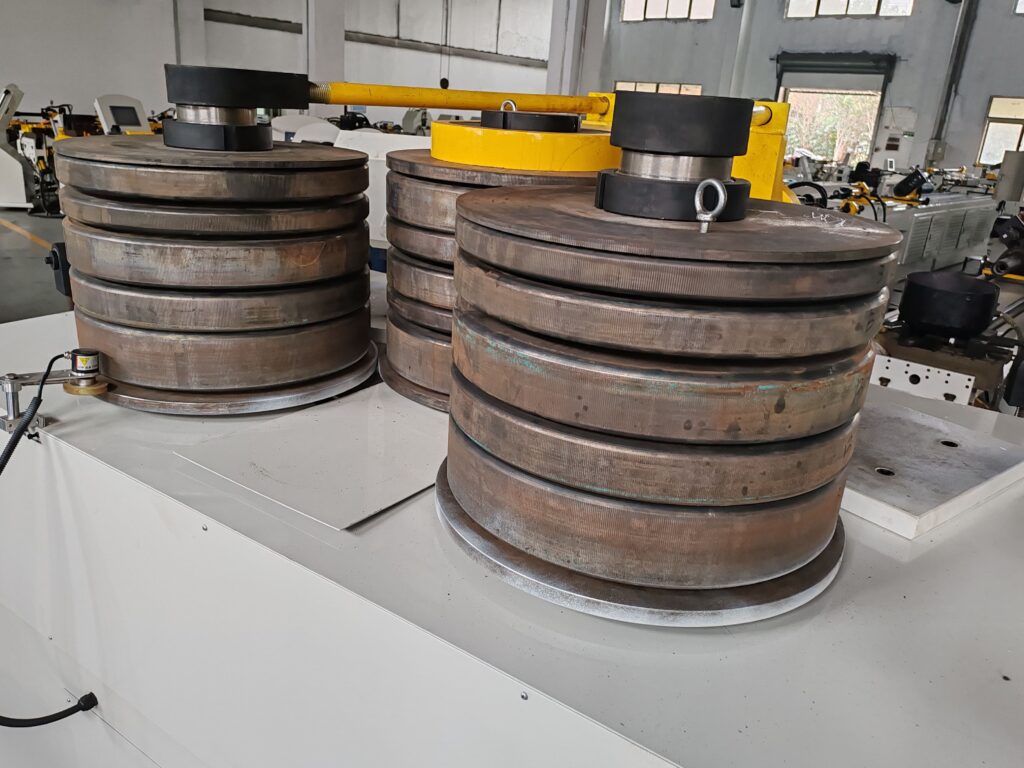
Pipe rolling machines are essential tools in the fabrication and manufacturing industries, used to bend pipes and tubes into various shapes and angles. Whether you are working on a small DIY project or a large industrial task, understanding how to properly use a pipe rolling machine is crucial for achieving precise and consistent results.
Table of Contents
- Introduction to Pipe Rolling Machines
- Types of Pipe Rolling Machines
- Preparing for Pipe Rolling
- Step-by-Step Guide to Using a Pipe Rolling Machine
- Tips for Achieving the Best Results
- Common Mistakes and How to Avoid Them
- Maintenance and Safety Considerations
- Conclusion
1. Introduction to Pipe Rolling Machines
A pipe rolling machine, also known as a pipe bender, is a device used to bend pipes and tubes into specific shapes and angles. The primary function of a pipe rolling machine is to apply pressure to a pipe or tube to create a desired bend without compromising the material’s integrity.
2. Types of Pipe Rolling Machines
There are several types of pipe rolling machines, each designed for specific applications and materials. The most common types include:
2.1 Manual Pipe Rolling Machines
Manual pipe rolling machines are operated by hand and are suitable for small-scale projects and thin-walled pipes.
2.2 Hydraulic Pipe Rolling Machines
Hydraulic pipe rolling machines use hydraulic pressure to bend pipes and tubes. They offer greater precision and can handle thicker and larger pipes compared to manual machines. These machines are commonly used in industrial settings where high volume and precision are required.
2.3 Electric Pipe Rolling Machines
Electric pipe rolling machines are powered by electric motors and provide consistent and efficient bending. They are suitable for medium to large-scale projects and are often equipped with advanced features such as programmable controls and automated bending processes.
2.4 CNC Pipe Rolling Machines
CNC (Computer Numerical Control) pipe rolling machines are the most advanced type, offering precise and automated bending capabilities. These machines are controlled by computer programs, allowing for complex bends and high repeatability. They are used in industries where precision and efficiency are paramount.
3. Preparing for Pipe Rolling
Before using a pipe rolling machine, proper preparation is essential to ensure accurate and safe operation. Here are the steps to prepare for pipe rolling:
3.1 Selecting the Right Machine
Choose the appropriate type of pipe rolling machine based on the material, diameter, and thickness of the pipe you are working with. Ensure that the machine’s capacity matches the requirements of your project.
3.2 Gathering Tools and Materials
Gather all necessary tools and materials, including the pipe rolling machine, pipes or tubes, measuring tools, and safety equipment such as gloves and safety glasses.
3.3 Measuring and Marking
Accurately measure and mark the pipe at the points where it needs to be bent. Use a measuring tape and a marker to ensure precise markings.
3.4 Setting Up the Machine
Set up the pipe rolling machine on a stable and level surface. Ensure that all components are properly assembled and that the machine is in good working condition.

4. Step-by-Step Guide to Using a Pipe Rolling Machine
Using a pipe rolling machine involves several steps to ensure accurate and consistent bends. Follow these steps for successful pipe rolling:
4.1 Inserting the Pipe
Insert the pipe into the machine’s rollers or bending mechanism. Ensure that the pipe is properly aligned and securely held in place.
4.2 Adjusting the Rollers
Adjust the rollers or bending mechanism to the desired angle and radius. This may involve setting the machine’s controls or manually adjusting the rollers.
4.3 Applying Pressure
Gradually apply pressure to the pipe by operating the machine. For manual machines, this may involve turning a handle or lever. For hydraulic, electric, or CNC machines, follow the machine’s operating instructions.
4.4 Monitoring the Bend
Continuously monitor the bending process to ensure that the pipe is bending correctly and that there are no signs of deformation or damage. Make adjustments as necessary.
4.5 Completing the Bend
Once the desired bend is achieved, release the pressure and carefully remove the pipe from the machine. Inspect the bend for accuracy and quality.
5. Tips for Achieving the Best Results
Achieving the best results with a pipe rolling machine requires attention to detail and proper technique. Here are some tips to help you achieve precise and consistent bends:
5.1 Use High-Quality Materials
Start with high-quality pipes or tubes that are free from defects and irregularities. High-quality materials are less likely to deform or crack during the bending process.
5.2 Perform Test Bends
Before working on your final piece, perform test bends on scrap pieces of pipe. This allows you to fine-tune the machine settings and ensure that the bend radius and angle are correct.
5.3 Maintain Consistent Pressure
Apply consistent pressure throughout the bending process to avoid irregular bends or deformations. Sudden changes in pressure can result in inaccurate bends.
5.4 Follow Manufacturer’s Guidelines
Always follow the manufacturer’s guidelines and recommendations for operating the pipe rolling machine. This includes adhering to weight and size limitations and using the machine as intended.
6. Common Mistakes and How to Avoid Them
Even experienced operators can make mistakes when using a pipe rolling machine. Here are some common mistakes and how to avoid them:
6.1 Incorrect Alignment
Incorrect alignment of the pipe can result in uneven bends or damage to the material. Ensure that the pipe is properly aligned with the machine’s rollers before starting the bending process.
6.2 Over-Bending
Over-bending can cause the pipe to crack or deform. Monitor the bending process closely and stop as soon as the desired angle is achieved.
6.3 Inadequate Support
Lack of support for the pipe during bending can lead to irregular bends or kinks. Use supports or guides as needed to maintain the pipe’s position and alignment.
6.4 Ignoring Safety Precautions
Failing to follow safety precautions can result in accidents and injuries. Always wear appropriate safety gear and follow the machine’s safety guidelines.

7. Maintenance and Safety Considerations
Proper maintenance and safety considerations are essential for the longevity of the pipe rolling machine and the safety of its operators.
Here are some key points to keep in mind:
7.1 Regular Maintenance
Perform regular maintenance on the pipe rolling machine, including cleaning, lubrication, and inspection of moving parts. Replace worn or damaged components as needed.
7.2 Safety Gear
Always wear appropriate safety gear, including gloves, safety glasses, and protective clothing. Ensure that the work area is well-lit and free from hazards.
7.3 Training and Certification
Operators should receive proper training and certification to use the pipe rolling machine. This ensures that they understand the machine’s operation and safety protocols.
7.4 Emergency Procedures
Familiarize yourself with the machine’s emergency stop procedures and have a plan in place for responding to accidents or malfunctions.
8. Conclusion
Using a pipe rolling machine effectively requires a combination of proper preparation, technique, and attention to detail. By selecting the right machine, following a systematic process, and adhering to safety guidelines, you can achieve precise and consistent bends for your projects.
Remember, practice makes perfect. With dedication and careful attention, you can achieve exceptional results and expand your capabilities in pipe and tube bending.



